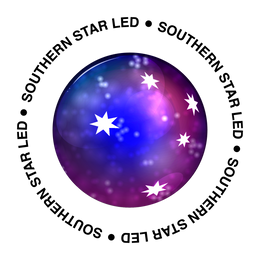The SS420+ Medic is a perfect LED grow light unmatched in its components, construction and performance.
But early considerations in our quest to develop the perfect botanical LED centered not around components and alloys, we’re experts at that, but on recreating the sun – the best grow light of them all.

The next question our lighting engineers posed was, ‘Okay, recreate the sun in which season and which phase of the day? Light is never static. With a static spectrum we must play pin-the-tail on the donkey from the endless choices the sun presents.’
And here, in effectively answering this question, over many trials, we run into the heart of the LED grow light issue, and the many industry marketing tactics. LED grow lights are either built to satisfy the real-world needs of plants, or to conform to industry propaganda.
We use nature as our template, and that big old star shining above us is quantifiable, and reproducible. There is nothing difficult, or original, in flooding a luminaire with cheap red chips to impress the metrics of a PAR meter. Current research demonstrates that a true botanical LED light requires much more sophistication.

Indeed, for years the industry has had a tendency to follow-the-trend. From the ‘blurples’ of the early years to the PAR preachers of today, established science and decades of field-research seem to have fallen casualty to the buzz-words and thinking of the moment.
In any former commercial outfit, whether growing chrysanthemums or cannabis, supplemental lighting had first to satisfy the question of visible light intensity measured in lumens for dollar spent, and PAR was a secondary consideration, if considered at all. HID lighting systems guarantee just that, High Intensity Discharge – and most of the light delivered is in the color range the human eye registers as bright, mostly greens and amber and reds, color bands modern thinking considers unproductive or unnecessary. A 1000W HID lighting system is guaranteed to perform to a standard, a very good standard, and PAR meters would have had you believe their historical success would not be possible.
PAR is a measure of Photosynthetically Active Radiation (theories about which are still evolving), that is, every photon of light within the 400-700mn color range. HID systems still in use today succeed, despite being dominant, and therefore bright, in the allegedly irrelevant color bands. Clearly, plants love lumens! Of course, to build a light that besides lumens also delivers more in every other band would be ideal, so we did.

The latest data from the Photobioenergetics Group at the Australian National University in Canbera demonstrates that, ‘In strong white light...the quantum yield of photosynthesis would be lower in the upper chloroplasts [of leaves], located near the illuminated surface, than that in the lower chloroplasts. Because green light can penetrate further into the leaf than red or blue light, in strong white light, any additional green light absorbed by the lower chloroplasts would increase leaf photosynthesis to a greater extent than would additional red or blue light.’
Sadly, the LED grow light industry insists on its cheap PAR fetish using additional red light to indulge PAR meters at the expense of overall photosynthetic performance and plant health.

A proper LED grow light, must first be very bright and run near cold – and only then, if it delivers abundant PAR values in the correct color bands besides, can it be considered a super light.
The SS420+ Medic delivers a full spectrum to reproduce the light of the high Australian sun at peak summer, and we believe we’ve perfectly pinned-the-tail on this beauty!

Experienced growers acknowledge that outdoor lighting conditions have always been superior to indoor alternatives. The spectrum plants receive affects many functions, not least being their morphology, their shape, and how true to type they finish.
We strive for the same large and tight and sticky flowers the Australian sun produces. We do not presume to improve on nature, especially with cheap industry tricks, but to simply provide the best indoor-sun LED technology allows.






